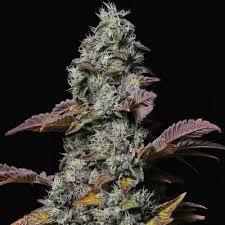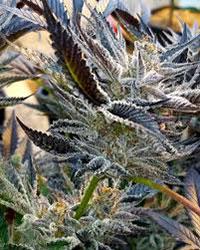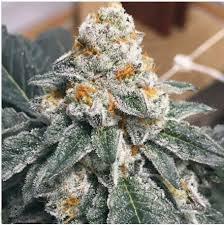Growing Cannabis Outdoors
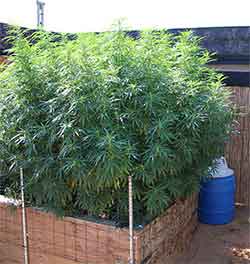
Introduction Growing Cannabis Outdoors
Growing cannabis outdoors can be an exciting and rewarding experience for enthusiasts and cultivators. The natural elements and abundant sunlight can contribute to robust plant growth and high-quality yields. However, to achieve success in outdoor cannabis cultivation, it is essential to understand the various factors that influence the growth and development of the plants. From selecting the right strains to preparing the outdoor growing area, implementing proper care techniques, and executing effective harvesting methods, this article aims to provide a comprehensive guide on how to grow cannabis outdoors. Whether you are a beginner or an experienced grower, these tips and insights will help you optimize your outdoor cannabis cultivation and achieve impressive results.
Choosing the Right Cannabis Strains for Outdoor Growth
Factors to Consider when Selecting Outdoor Cannabis Strains
When it comes to growing cannabis outdoors, choosing the right strains is crucial for a successful harvest. You need to consider factors such as climate, pest resistance, and flowering time. After all, you want your plants to thrive and produce those beautiful buds!
Best Outdoor Cannabis Strains for Different Climates
Now, depending on where you live, the climate can vary greatly. But fear not, there are cannabis strains out there that can handle whatever Mother Nature throws at them. For colder climates, you might want to go for hardy strains like Northern Lights or White Widow. If you're lucky enough to live in a sunny and warm location, then strains like Durban Poison or Hawaiian Snow might be perfect for you. Just remember to check the recommended growing conditions for each strain to ensure a successful outdoor adventure!
Essential Factors for Successful Outdoor Cannabis Cultivation
Outside growing in black plastic buckets: Not a great idea, but if you do they should be a 5 gallon bucket minimum. Black plastic buckets should be painted or covered with white to reflect heat. Turn inside out and tape around buckets. Or you can bury buckets in ground a few inches from top.
Roots will cook in these buckets if smaller 15 gallon and left black in 70% or more sun.
Better to use the cloth bags to prevent overheating the roots. or at the least light colored creramic pots.
Understanding Sunlight Requirements for Outdoor Cannabis
Sunlight is like magic for your cannabis plants. They need a lot of it to grow big and strong. Make sure to choose a spot in your garden that receives at least 8 hours of direct sunlight every day. If you're in a shady area, you might want to consider trimming some branches or even relocating your plants to a sunnier spot. Your plants will thank you with some impressive buds!
Foxtailing Buds
Foxtailing in cannabis refers to the abnormal growth of buds, characterized by long, fox tail-like formations. This occurs when the plant's calyxes continue to produce new clusters of pistils or stigma well after they are supposed to stop.
What causes Foxtailing in Cannabis Plants?
Foxtailing in cannabis plants is primarily caused by environmental stresses and genetic factors. Environmental stressors include excessive heat, high light intensity (stretching towards light), nutrient deficiencies or imbalances, and inconsistent lighting schedules (to much shade time).
When faced with these conditions, the plant's growth hormones can be disrupted, leading to abnormal bud development.
Genetic factors of Sativa vs Indica vs Ruderalis also play a role in foxtailing, Sativa-dominant strains are more susceptible than indica-dominant ones due to their longer flowering times and taller structures. And Ruderalis (used to make autoflower strains) may also be caused by Rodelization (extended flowering times).
The excessive elongation of branch internodes may result in an uneven canopy and the formation of elongated calyxes that resemble fox tails. It is important for growers to maintain optimal growing conditions such as adequate cooling systems, proper nutrient ratios, and consistent
Soil Preparation and Testing
You know what they say: healthy soil, healthy plants. Before planting your cannabis seeds, it's important to prepare the soil properly. Remove any weeds or debris and make sure the soil is well-draining. You can also add some organic compost or fertilizer to give your plants a nutrient boost. Oh, and don't forget to do a soil test to check the pH levels and make any necessary adjustments. Your plants will appreciate the effort and reward you with luscious buds!
Importance of Proper Air Circulation
Just like humans, cannabis plants need fresh air to thrive. Good air circulation helps prevent the growth of mold and mildew, which can ruin your precious buds. Trim any large leaves that may be blocking airflow and consider placing a fan near your plants to keep that air flowing. Your plants will breathe easy and you'll be rewarded with bud-filled branches!
Preparing the Outdoor Growing Area
Site Selection and Considerations
Choosing the right spot for your cannabis garden is key. Look for an area that is sheltered from strong winds and has good drainage. Privacy is also something to consider, unless you want curious neighbors poking around. If you're growing in pots, make sure they have enough space and can be easily moved around if needed. Your plants will feel right at home and grow happily!
Cleaning and Clearing the Growing Area
Before you start planting, it's important to clear the area of any unwanted vegetation. Remove any weeds, rocks, or other debris that might interfere with your plants' growth. Trust me, your cannabis plants will appreciate having all that space to spread their roots and will reward you with an abundant harvest!
Creating Optimal Soil Conditions
Once your growing area is clean and clear, it's time to focus on creating the perfect soil conditions. You want that soil to be well-draining and rich in nutrients. Add some organic matter, like compost or worm castings, to improve the soil structure and give your plants a healthy foundation to grow. Your cannabis plants will dig it, and so will you when you see those beautiful buds!
Harvesting Techniques for Maximum Potency
To harvest your outdoor-grown cannabis buds, start by carefully cutting the branches one by one. Use sharp and clean pruning shears or scissors to avoid damaging the plant. Trim away any excess leaves, leaving only the buds.
It's essential to handle the buds gently during the harvesting process to avoid trichome damage. The trichomes contain the valuable cannabinoids responsible for the plant's potency and effects. Treat those trichomes like tiny treasures, delicately preserving their magical goodness.
Proper Drying and Curing Methods
After harvesting, your buds need to go through a proper drying and curing process to maximize their flavor and potency. Hang the trimmed branches upside down in a cool, dark, and well-ventilated space. Maintain a temperature of around 60-70°F (15-21°C) with humidity levels around 45-55%.
Allow the buds to dry slowly for about a week or until the stems snap easily. Once dry, transfer the buds to sealed glass jars. During the curing process, open the jars daily for a few minutes to release excess moisture and check for any signs of mold. After a few weeks of curing, your buds will be at their prime, ready to be enjoyed and celebrated.
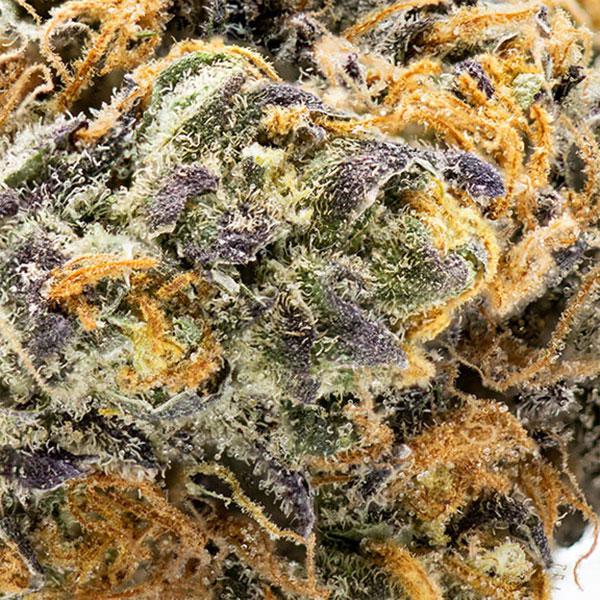
Planting and Germinating Cannabis Seeds Outdoors
Choosing the Right Planting Time
Timing is everything, especially when it comes to planting cannabis seeds outdoors. You want to wait until the threat of frost has passed and the weather is consistently warm. Typically, early spring is a good time to get those seeds in the ground. Keep an eye on the local weather forecast and let Mother Nature guide you. Your plants will thank you for not subjecting them to a frosty surprise!
Methods for Germinating Cannabis Seeds
Germinating cannabis seeds is like a mini miracle. There are a few methods you can use, such as the paper towel method or directly planting them in seedling trays. Whichever method you choose, make sure to keep the seeds warm and moist. Just remember, they're fragile little things, so handle them with care. Before you know it, you'll have tiny seedlings ready to take on the great outdoors!
Transplanting Seedlings into Outdoor Growing Area
Once your seedlings have sprouted and have a few sets of leaves, it's time to give them some room to stretch their roots. Transplanting them into your outdoor growing area is like giving them a new lease on life. Make sure to dig a hole that's big enough to accommodate the entire root ball, and gently place the seedling in its new home. Pat the soil around it to secure it in place, and watch your little seedling grow into a mighty cannabis plant!
Now that you have all the knowledge you need, it's time to embrace your green thumb and get growing. Happy gardening, and may your cannabis plants bring you joy, relaxation, and maybe even a little mischief!
Outdoor Cannabis Care: Watering, Nutrients, and Pest Control
Proper Watering Techniques and Irrigation Systems
Watering your outdoor cannabis plants may seem simple enough, but there's more to it than just pouring water over them. Proper watering techniques can help ensure your plants stay healthy and hydrated. One way to water effectively is to give your plants a deep soak once or twice a week, allowing the water to penetrate deep into the soil. This encourages the roots to grow deeper and helps the plant become more resilient.
Consider using an irrigation system, such as drip irrigation, to make watering easier and more efficient. Drip irrigation delivers water directly to the root zone, reducing water waste and preventing overwatering. Plus, it saves you the hassle of lugging around a watering can or hose.
Understanding Nutrient Needs and Fertilization
Just like any living organism, cannabis plants need proper nutrition to thrive. Understanding their nutrient needs is essential for a successful outdoor grow. Feed your plants with a quality fertilizer like Holi Moli Juice that has all the necessary nutrients like nitrogen, phosphorus, and potassium. Follow the feeding instructions provided. It will supply all the specific needs of your plants. And don't forget, moderation is key, so be mindful of the quantities you're using. Give your plants the right fuel, and they'll reward you with healthy growth and potent buds. Rich in nitrogen (N), phosphorus (P), and potassium (K), as these are the primary macronutrients required by cannabis.
When fertilizing your plants, remember the golden rule: less is more. Overfeeding cannabis plants can lead to nutrient burn and other problems. Start with a diluted dose of fertilizer and gradually increase it as your plants grow. Regularly monitor your plants for signs of nutrient deficiencies or excesses and adjust your feeding accordingly.
Identifying and Managing Common Outdoor Cannabis Pests
Outdoor cannabis cultivation can attract various pests, from aphids to spider mites. Identifying and managing these pests is crucial to protect your plants and ensure a successful harvest. Keep an eye out for common signs of pest infestation, such as yellowing or spotted leaves, webbing, or insect presence.
To combat pests, consider using Organic pest control methods, such as The Elinimator can help keep these unwanted visitors away and is effective against pests while minimizing harm to beneficial insects. The Elinimator is a handy tool in your organic pest control kit. It repels unwanted visitors killing them and their eggs, keeping your plants safe and sound. Just remember to follow the instructions carefully. It is environmentally friendly and less likley to harm beneficial insects like bees. Regularly inspect your plants for signs of pests and take action early to prevent infestations from spreading. Remember, a little extra care in pest control can go a long way in maintaining the health of your outdoor cannabis garden.
Pruning and Training Techniques for Maximizing Outdoor Cannabis Yield
Importance of Pruning for Airflow and Light Penetration
When it comes to maximizing your outdoor cannabis yield, pruning is a game-changer. Pruning involves removing unnecessary leaves and branches to improve airflow and allow more light to reach the lower parts of the plant. This process not only helps prevent mold and mildew but also boosts bud development.
Focus on pruning the lower branches and leaves that receive little light or compete for energy resources. Be careful not to remove too much foliage, as the plant still needs leaves for photosynthesis. Remember, a happy plant with good airflow is a plant that produces bountiful buds.
Training Methods for Encouraging Lateral Growth
To further optimize your outdoor cannabis yield, consider training techniques that encourage lateral growth. By doing so, you can create a bushier plant with more bud sites. One popular method is low-stress training (LST), where you gently bend and tie down the branches to open up the plant's canopy and provide more space for bud development.
Another method is the use of trellises or netting to support the plant and promote lateral growth. This technique helps distribute the weight of heavy buds and ensures they receive adequate light. Whichever method you choose, remember that a well-trained plant is like a well-behaved child: it produces the best results.
Utilizing Support Structures for Heavy Buds
As your outdoor cannabis plants grow and develop, they may start to produce some seriously heavy buds. To prevent branches from snapping under the weight, it's essential to provide support structures. This can be as simple as using bamboo stakes or tomato cages to prop up your plants and keep them upright.
Supporting your plants not only prevents damage but also allows more airflow and light penetration, leading to healthier buds. Plus, you'll avoid the heartbreak of finding your precious buds lying on the ground after a heavy rain or windstorm
.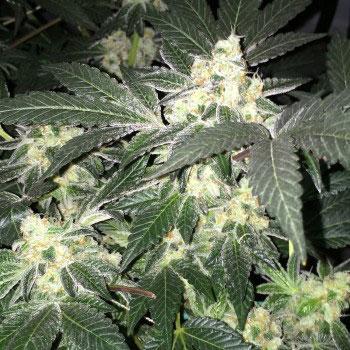
Harvesting and Curing Outdoor-Grown Cannabis Buds
Indications of Cannabis Plant Maturity
Knowing when to harvest your outdoor-grown cannabis plants is a crucial step in achieving the desired potency and flavor. Look for signs of maturity, such as the pistils (hairs) on the buds turning brown or curling in, and the trichomes (resin glands) changing from clear to milky white or amber. These indicators suggest that the cannabinoids are at their peak and the plant is ready to be harvested.
Harvesting Techniques for Maximum Potency
Used every 10 days while flowering Medacann can make your buds tighter and trichromes up to 30% larger.Also hekps with preventing heat stress and high wind leaf damage, It 's a plant strentghener. Proceed as directed, and be prepared for the incredible results.
To harvest your outdoor-grown cannabis buds, start by carefully cutting the branches one by one. Use sharp and clean pruning shears or scissors to avoid damaging the plant. Trim away any excess leaves, leaving only the buds.
It's essential to handle the buds gently during the harvesting process to avoid trichome damage. The trichomes contain the valuable cannabinoids responsible for the plant's potency and effects. Treat those trichomes like tiny treasures, delicately preserving their magical goodness.
Proper Drying and Curing Methods
After harvesting, your buds need to go through a proper drying and curing process to maximize their flavor and potency. Hang the trimmed branches upside down in a cool, dark, and well-ventilated space. Maintain a temperature of around 60-70°F (15-21°C) with humidity levels around 45-55%.
Allow the buds to dry slowly for about a week or until the stems snap easily. Once dry, transfer the buds to sealed glass jars. During the curing process, open the jars daily for a few minutes to release excess moisture and check for any signs of mold. After 7 to 15 days of curing, your buds will be at their prime, ready to be enjoyed and celebrated.
Tips and Best Practices for a Successful Outdoor Cannabis Grow
Monitoring and Adjusting Environmental Factors
Throughout the outdoor growing process, it's crucial to monitor and adjust environmental factors to ensure your plants thrive. Keep an eye on temperature, humidity, and light levels. Invest in a thermometer, hygrometer, and light meter to accurately measure these variables.
If necessary, take measures to mitigate extreme weather conditions such as excessive heat or heavy rain. Consider using shade cloth or creating makeshift shelters to protect your plants. Remember, a little TLC goes a long way in keeping your plants happy and healthy.
Regular Maintenance and Plant Health Checks
Maintaining a healthy outdoor cannabis garden requires regular maintenance and plant health checks. Inspect your plants regularly for signs of nutrient deficiencies, pests, or diseases. Catching problems early allows you to address them promptly and prevent potential disasters. Organic pest control methods, such as The Elinimator can help keep these unwanted visitors away and is effective against pests while minimizing harm to beneficial insects. The Elinimator is a handy tool in your organic pest control kit. It repels unwanted visitors killing them and their eggs, keeping your plants safe and sound. Just remember to follow the instructions carefully.
Remove any dead or dying leaves, as they can attract pests and hinder plant growth. Keep the area around your plants clean
Closing Thoughts
Growing cannabis outdoors can be a fulfilling and enjoyable endeavor, allowing you to harness the power of nature to cultivate healthy and potent plants. By understanding the key factors involved in outdoor cannabis cultivation and implementing best practices, you can maximize your yields and produce high-quality cannabis buds. Remember to choose the right strains for your climate, provide optimal care, and utilize effective pruning and training techniques. With proper knowledge and dedication, your outdoor cannabis grow can thrive, providing you with a bountiful harvest and a sense of accomplishment. Happy growing!
FAQ
Can I grow cannabis outdoors in any climate?
While cannabis is a resilient plant, it thrives best in specific climates. Some strains are more suitable for warm and sunny climates, while others can withstand colder temperatures. It is important to select cannabis strains that are well-suited for your particular climate to ensure successful outdoor cultivation.
How often should I water my outdoor cannabis plants?
The frequency of watering your outdoor cannabis plants depends on various factors such as climate, soil type, and plant maturity. It is crucial to strike a balance between under-watering and over-watering. Generally, outdoor cannabis plants require watering when the top inch of soil feels dry. However, it is recommended to monitor your plants closely and adjust watering frequency as needed.
Are there any legal considerations for growing cannabis outdoors?
It is essential to be aware of the legal regulations surrounding cannabis cultivation in your specific region. While some areas allow personal cultivation, others may have restrictions or require licenses. Make sure to research and comply with local laws and regulations to avoid any legal issues.
How do I protect my outdoor cannabis plants from pests and diseases?
Preventing and managing pests and diseases is crucial for the health and success of your outdoor cannabis plants. Implementing regular inspections, practicing good sanitation, utilizing organic pest control methods, and maintaining proper air circulation can all help prevent and mitigate pest and disease issues. Additionally, selecting pest-resistant strains and providing proper care can contribute to the overall resilience of your plants
Organic pest control methods, such as The Elinimator can help keep these unwanted visitors away and is effective against pests while minimizing harm to beneficial insects. The Elinimator is a handy tool in your organic pest control kit. It repels unwanted visitors killing them and their eggs, keeping your plants safe and sound.
|
